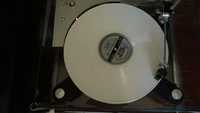
|
2019 August 25 |
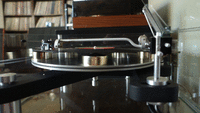
|

|
2019 August 25 |

|
There are things we own, things that own us, and things in between. I buy a carton of eggs at the grocery store and they're mine. I can make them into an omelet, I can hard boil them and paint Easter decorations, I can even throw them off my rooftop. They're mine and nobody I know says otherwise.
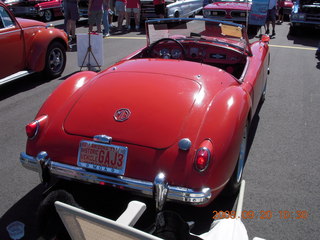
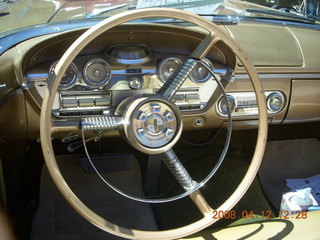

|
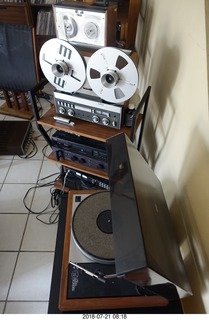
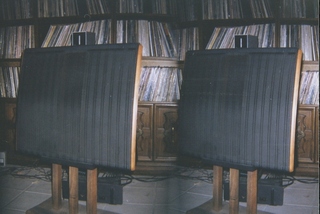
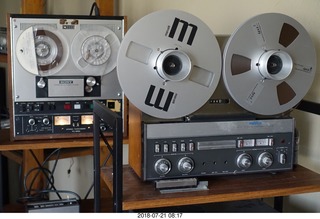
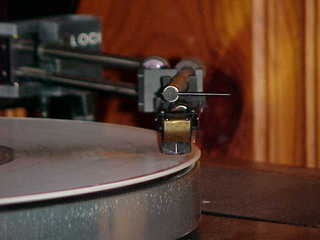
|
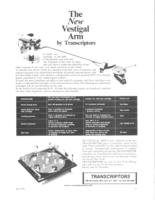 In the mid 1970s I encountered a high-end audio store
called Music and Sound Limited in Willow Grove, Pennsylvania.
When I was building tonearms out of Lego blocks,
Larry, who worked there, showed me a tonearm called the Vestigal
from a company called Transcriptors.
It looked like a marionette with the head bobbing up and down
to track small record warps better than anything else.
The object of their game was minimum mass,
both horizontal and vertical.
I never saw it play a record,
or even mounted on a turntable,
just loose in the box.
It inspired my own
LOCI
tonearm, also "articulated"
with separate vertical and horizontal motion.
The Vestigal is a beautiful tonearm.
In the mid 1970s I encountered a high-end audio store
called Music and Sound Limited in Willow Grove, Pennsylvania.
When I was building tonearms out of Lego blocks,
Larry, who worked there, showed me a tonearm called the Vestigal
from a company called Transcriptors.
It looked like a marionette with the head bobbing up and down
to track small record warps better than anything else.
The object of their game was minimum mass,
both horizontal and vertical.
I never saw it play a record,
or even mounted on a turntable,
just loose in the box.
It inspired my own
LOCI
tonearm, also "articulated"
with separate vertical and horizontal motion.
The Vestigal is a beautiful tonearm.
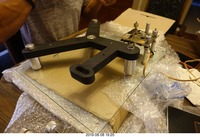 Maybe six months later, maybe a year, maybe two years,
I saw a cool turntable called the Transcriptors Skeleton.
It has a lovely platter that suspends the vinyl record
on ten rubber dimples with five-fold symmetry
and the platter-tonearm combination balances on
a three-point spring suspension.
By whatever artistic standard the Vestigal looks good,
the Skeleton looks every-so-much-more-so beautiful.
I saw the Skeleton, but not with a Vestigal mounted on it.
Maybe six months later, maybe a year, maybe two years,
I saw a cool turntable called the Transcriptors Skeleton.
It has a lovely platter that suspends the vinyl record
on ten rubber dimples with five-fold symmetry
and the platter-tonearm combination balances on
a three-point spring suspension.
By whatever artistic standard the Vestigal looks good,
the Skeleton looks every-so-much-more-so beautiful.
I saw the Skeleton, but not with a Vestigal mounted on it.
But here it was on eBay, Skeleton and Vestigal from 1973, way too much money for a turntable and tonearm, even with a nice Ortofon phonograph cartridge. I winced, I decided that I could live with paying that much not just for a piece of audio history, but also for a piece of art, something lovely in my home that I can look at. I may think my Linn/LOCI looks terrific, but it's plain-Jane next to the Transcriptor set-up.
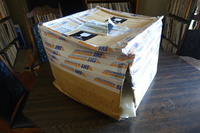 So I got the box sent from Russia,
well most of it,
because the seller didn't pack it very well.
(Here
are videos of the product and pictures of my journey
from a broken box full of parts to a working system.)
There were tears large enough for parts to fall out,
so I believe him when he says he packed all the parts
even though some were missing.
I found a fellow in Florida who had the missing parts
and could tell me how they fit together.
Life is good after all!
So I got the box sent from Russia,
well most of it,
because the seller didn't pack it very well.
(Here
are videos of the product and pictures of my journey
from a broken box full of parts to a working system.)
There were tears large enough for parts to fall out,
so I believe him when he says he packed all the parts
even though some were missing.
I found a fellow in Florida who had the missing parts
and could tell me how they fit together.
Life is good after all!
So now I have it wired and running in my hifi. There's no user switch. Instead there's an old telephone-switch-style reed switch and a magnet that moves closer to the switch to turn it on. There are only three wires from the headshell back to the pivot, so the two cartridge ground wires are connected to each other. It's okay, it works, and it still looks lovely. The tonearm has no armrest as the anti-skate is set by balancing the back pivot so it gently stays away from the platter.
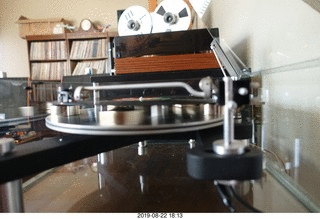 Time for audition:
The Transcriptors setup is beautiful and it sounds nice.
In spite of having no way to regulate
its constantly-changing vertical angle,
in spite of the Ortofon being a middle-level performing cartridge,
in spite of the suspension not being
as smooth and balanced as it was forty-six years ago,
the sound is smooth and balanced
with a satisfying image on records that have a real stereo image.
It's a joy to listen to it,
not to mention how beautiful it is.
Time for audition:
The Transcriptors setup is beautiful and it sounds nice.
In spite of having no way to regulate
its constantly-changing vertical angle,
in spite of the Ortofon being a middle-level performing cartridge,
in spite of the suspension not being
as smooth and balanced as it was forty-six years ago,
the sound is smooth and balanced
with a satisfying image on records that have a real stereo image.
It's a joy to listen to it,
not to mention how beautiful it is.
Time for comparison: The Linn/LOCI/Denon is an easy winner. It does control the vertical angle repeatably and precisely and it has more horizontal mass. Inspired by the Vestigal I designed it that way. As I expected, its image is clearer and more consistent and its bass is a whole lot deeper and tighter. Voices and instruments are more real and there's more there there. It doesn't make the Transcriptors any worse and I would have been very surprised had it come out the other way.
So now I have two good-looking, good-sounding turntables.
No complaints.
They go well with my two half-track
and my quarter-track tape decks.
There's a Camelot Magic digital-to-analogue converter
to play the FLAC files I made from my compact disks (CDs),
so now I'm in audio heaven with lots of input media.
2020 April 5, Sunday morning.
A month or two the Vestigal tonearm started humming
on the inner grooves, both channels completely dead,
nothing but hum.
It sounds like an intermittent wire in the back of the 'arm,
not something I can fix nor do I have anybody offering
to do it for me.
Ouch!
Well, I got lucky and found another Vestigal tonearm on eBay.
It came with the thread broken in shipping.
Ouch!
The thread broke right at the screw,
so I was able to get the infinitesimally-shorter thread
screwed to the back of the 'arm hanging
(ahem) by a thread.
With my aging poor eyesight and similarly-aging clumsy hands
I got the thing mounted and one of the channels was dead.
I checked with a volt-ohm meter and the "hot" lead
was completely open, no connection.
Ouch!
So I went on line and, lucky once, lucky again,
found yet a third Vestigal tonearm on eBay.
It came with a Sonus Blue cartridge,
no stylus guard so I had to be super careful
(again with my aging poor eyesight and similarly-aging clumsy hands,
so I had to solder the clips that broke from their tiny wires)
in getting the thing ready to put on the turntable.
This time I was smart,
(it had to happen sometime)
I checked the circuit for continuity,
and all was good.
When I mounted this 'arm, however,
I found the threaded mount didn't reach through the
Transcriptor-Skeleton-turntable armboard.
It was shorter.
Ouch!
So I wrote a whiny email
to my Transcriptors-parts friend in Florida.
Maybe I could send him all three tonearms
and get one good one back.
He said he didn't have time to fix it for me.
Ouch!
He also mentioned there were
multiple
mounts
and that I could get the
right
one on eBay.
Eureka!
The mount comes off and, Ah ha!,
I already have the longer-thread mount on the dead-channel tonearm.
Some minor surgery later and I had a Frankenstein Vestigal tonearm
ready to mount.
With the stylus hanging out there just waiting to hit something
it was a bit harrowing,
but I got the arm mounted, height set, overhang and angle aligned,
tracking weight adjusted and ready to play.
The end of the story is that now,
2020 April 5, Sunday morning,
I have my Transcriptors system back up and running
and sounding fine.
It's a wonderful, lovely thing,
maybe no Linn-beater,
but who cares.
I can still enjoy its beauty
as I watch it and listen to it
with two channels again.
Whee!
|
8:01:44 Mountain Standard Time (MST). 46 visits to this web page. |